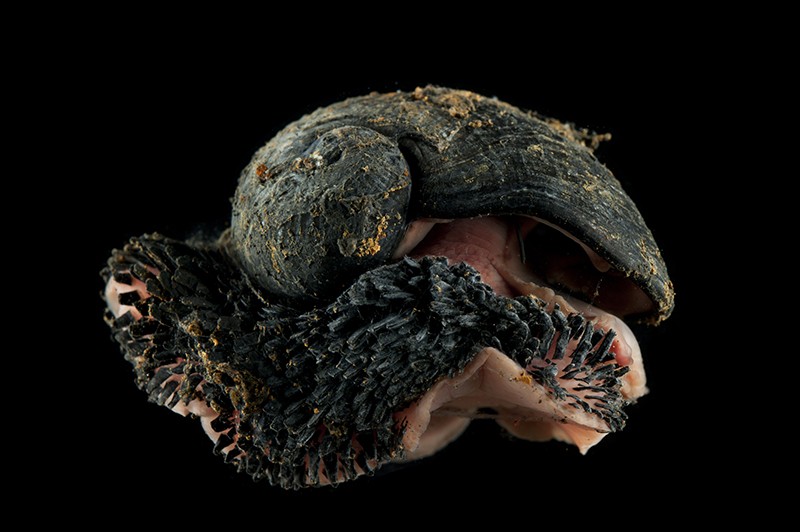What is an island? One thinks of a patch of land circled by the ocean, but islands are concepts. From a biological point of view, whenever you are stranded on a place with no hope to escape, you are on an island.
Hydrothermal vents, among the weirdest and most fascinating environment on Earth, are insular environments. Their hot, peculiar and extreme conditions quickly give space to the usual cold peace of the abyss, and creatures which live on a vent rarely can venture elsewhere. They are submerged islands: patches of an environment surrounded by something entirely else, its creatures prisoners depending on their prison and, as such, fragile.

The reality of the fragile vent ecosystems has been put forward last year with the debut, in the IUCN Red List, of the scaly foot snail (Chrysomallon squamiferum), the «scaly foot snail» or «pangolin snail».
I name it the iron snail: since it’s the only one metazoan which naturally uses iron (in the form of iron sulfide) to build its armor. As it often happens, islands allow the tree of life to explore avenues it couldn’t elsewhere, in relative peace. The iron snails are little, parallel experiments of evolution, running since tens of millions of years; current hydrothermal vent species started to diverge after the K/T event and the Paleocene/Eocene thermal maximum.
The iron snail however reverberates, in its unsightly scales, the much more ancient history of its lineage. An analysis of its genome reveals that its sclerites are formed by repurposing an ancient biomineralization genetic machinery, perhaps more ancient than mollusks themselves. Distant cousins of mollusks which teemed in the Cambrian seas, such as Halkieria, were covered of a chain armor of sclerites as well. «It is unclear whether the evolution of the sclerites in the Scaly-foot Snail should be interpreted as a recurring ancestral phenome, or a recently derived adaptive novelty.», states the paper. Whatever the truth, it means that covering themselves with scales is a recurring option in the evolutionary toolkit of mollusks and mollusk-like organisms. The iron snail, in the blind warm depths of the oceans, tells us a story much larger than itself.
So far, the iron snail does not know anything about being in danger. But it is threatened by deep sea mining, since two of its three known hydrothermal vent habitats are now considered for exploitation. Ironically enough, they could be mined for iron, among other metals. The iron snail evolved millions of years to exploit the metals of a deep ocean. Until a few thousands of years ago no other animal on Earth knew how to use them. How weird would it be for the snails, if they could know, that a species that breathes air and evolved in the savannahs now wants to steal their metal, the metal that for millions of years was theirs, and theirs alone.
Paper: Sun, J., Chen, C., Miyamoto, N. et al. “The Scaly-foot Snail genome and implications for the origins of biomineralised armour.” Nat Commun 11, 1657 (2020). https://doi.org/10.1038/s41467-020-15522-3
